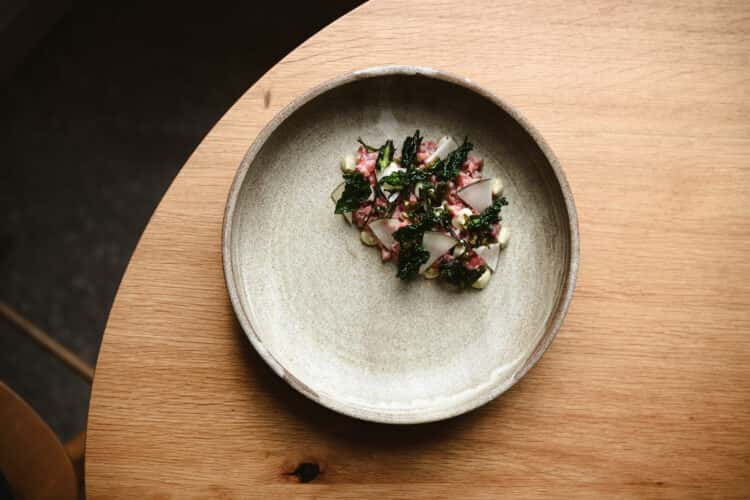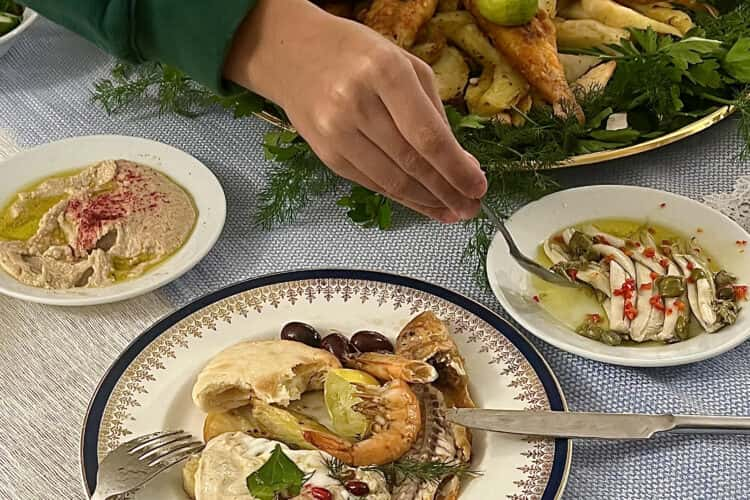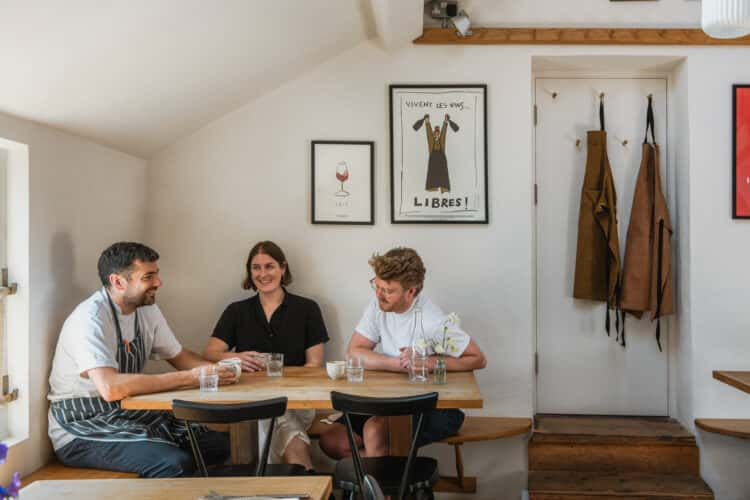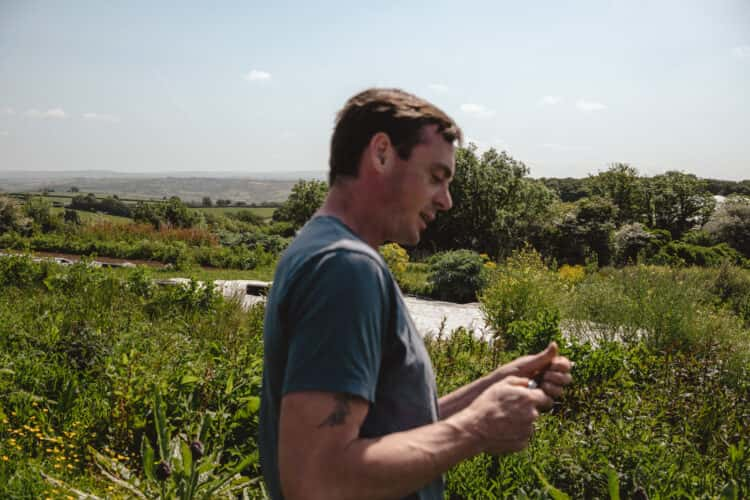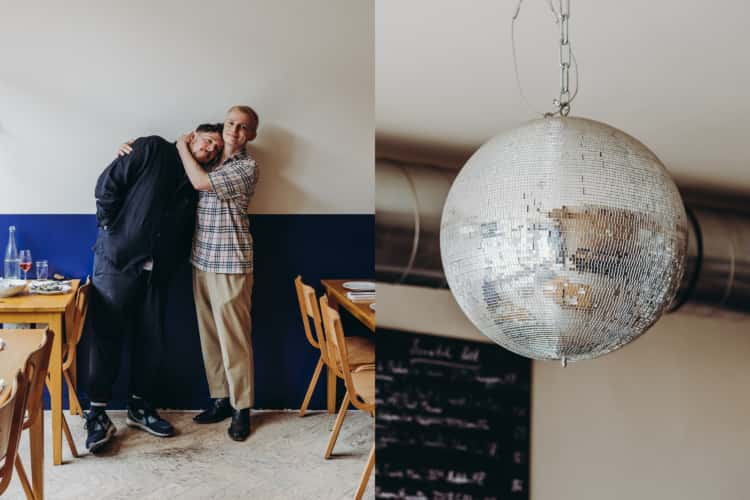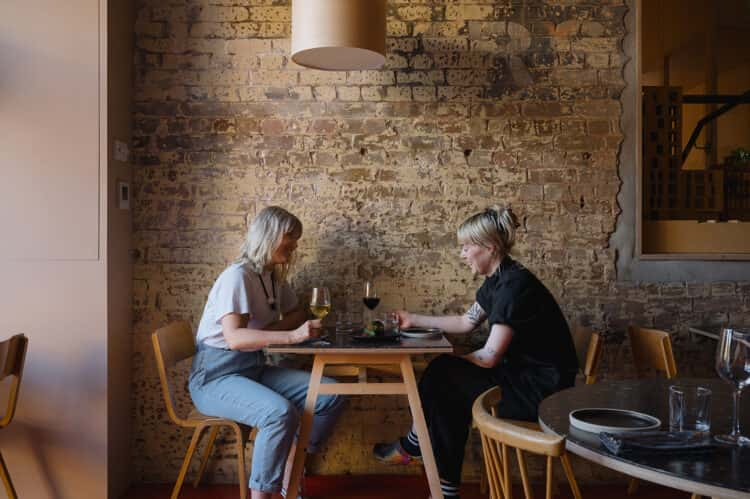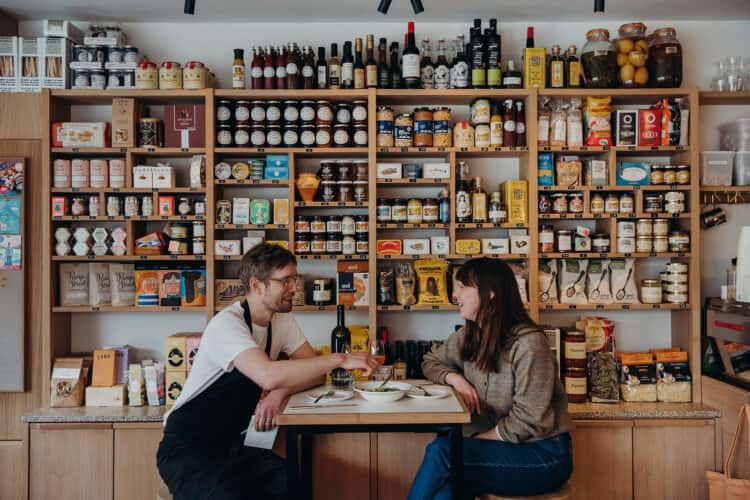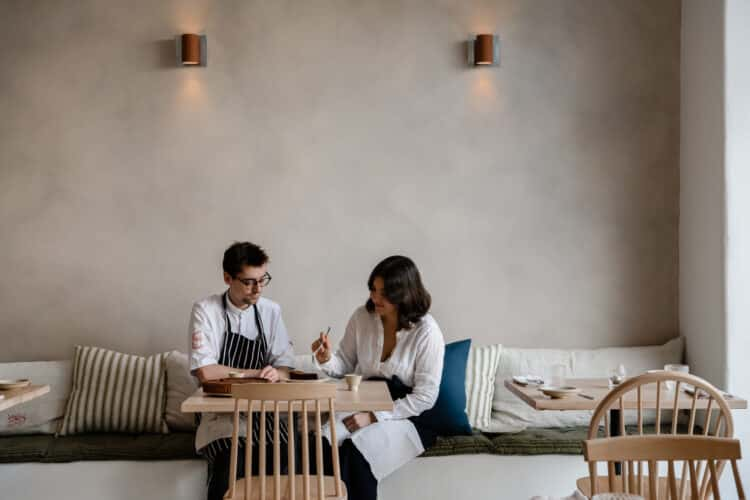Chef Nicholas Balfe on supporting local farmers and sourcing fresh produce at his restaurant Holm in Somerset
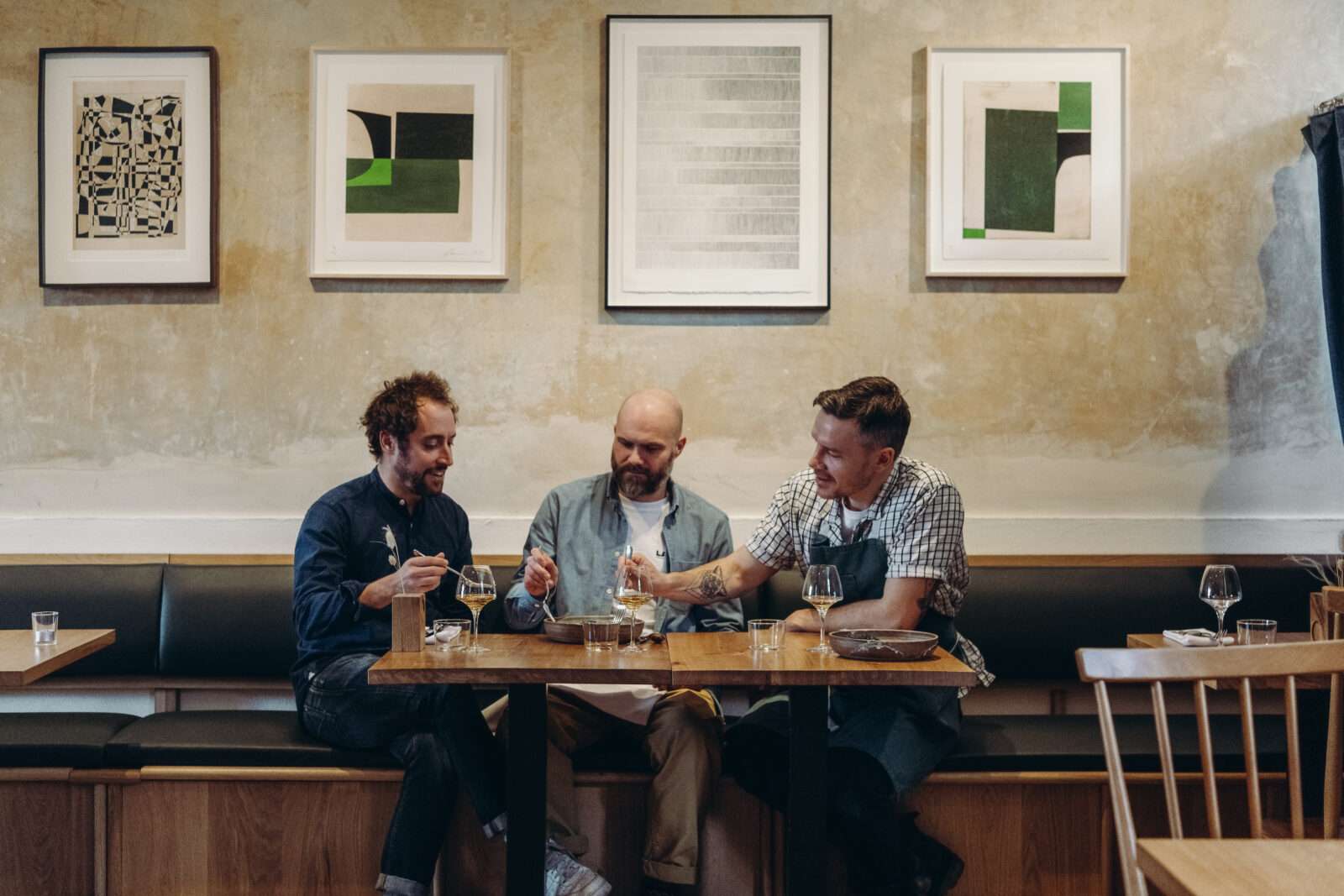
In a drive to connect itself with local growers and farmers, the menu has hearty provenance, peppered with the rich pickings of nearby producers, such as Westcombe Dairy and Somerset Charcuterie. Holm’s distinct farm-to-table approach has been shaped, in part, by Nicholas’ life-long affinity with the surrounding landscape: he grew up here and, after a stint in London, has now returned to the open fields of the Witcombe. We sojourned south-west for the day, where Nicholas and co-founders Matt Bushnell and Mark Gurney tell us about the beautiful produce of the countryside and the relationships they’ve made with the farming community. Plus, Nicholas shares his recipe for beef tartare with anchovy mayonnaise and seaweed vinegar.


Nicholas: “It’s not that we don’t have close relationships with our suppliers in London, because we absolutely do, but the difference here is that we are one step away from the supply chain. I spent the first 10 years of my life growing up in Somerset and Dorset, so I have always had a connection to the south west of England. It is such a beautiful part of the country.”
Matt: “I grew up in an old farmhouse in Essex, surrounded by sheep in fields, so I definitely have an affinity with rural England. Growing up, the food we ate wasn’t very gastronomic – we’d cook lots of things like pies and roasts on the Aga. I also had a real food connection with north Norfolk, where we spent lots of summers foraging for cockles, shrimps and sea vegetables. I fell in love with seafood and that idea of sea-to-table has really informed my relationship with food.”
Mark: “I think having a curiosity about food has always been my strength. Provenance and an understanding of where my food comes from really influence what I buy – I tend to go for organic, British and as local as possible. And I always have lots of vegetables!”

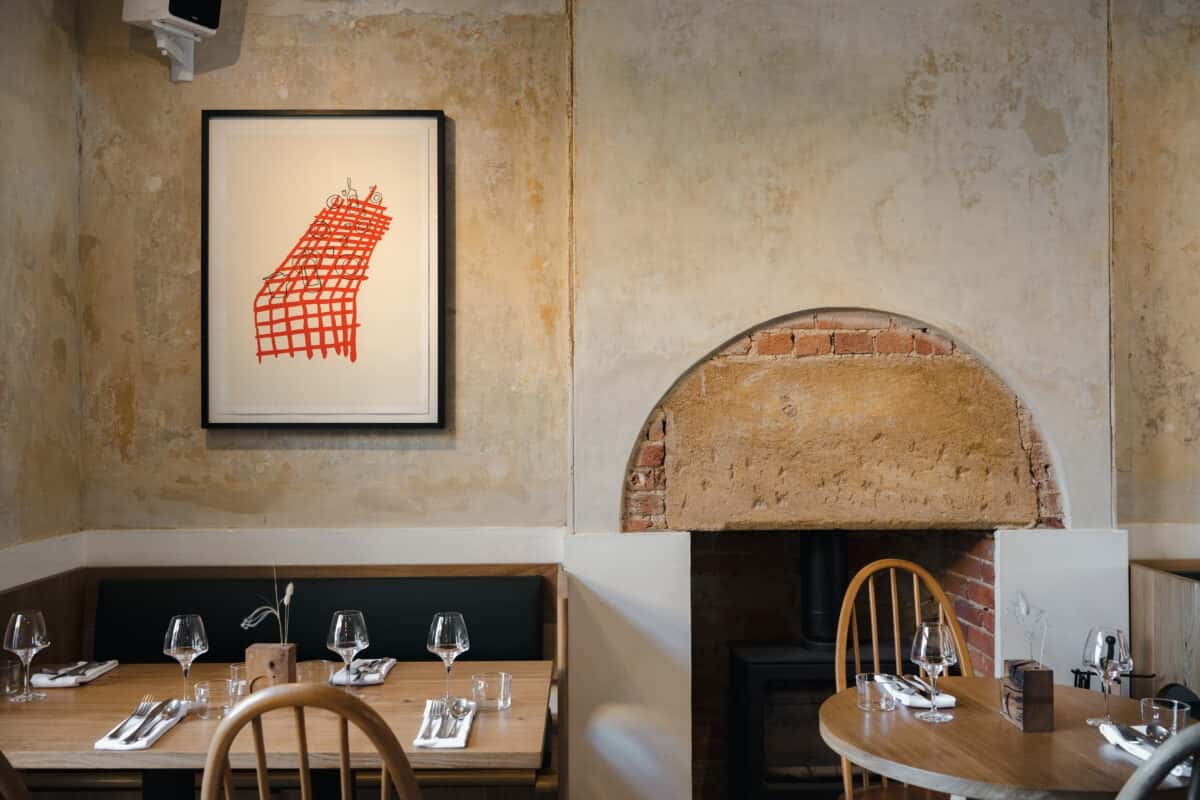

Nicholas: “Developing relationships with local growers and farmers has been a fluid and organic process. It helps that there are lots of good producers here. We buy our meat from Bagnell Farm, which is about four miles away; I drive past their cows on the way to work. It is an absolutely stunning regenerative farm. They use lots of organic produce and focus on soil health. As well as being very tasty, the cows are a slow-reared heritage breed; you can’t breed them in an industrial way.
“We know the farmer at Bagnell personally. He drops off the meat himself. It creates a wonderful sense of connectivity to the produce we use and gives us a personal connection to the people growing our ingredients. It defines what we are doing here in Somerset. That sense of connection to the ingredients is a dream for chefs. Having such a direct connection to a farmer isn’t so easy in London. They’re just too far away.
“Somerset is synonymous with dairy because it has such great land for grazing cows. We work with Westcombe Dairy, who are real artisans working on a larger scale. We use their cheese on one of our signature dishes, our Westcombe cheddar fries, which we have been serving since we opened.
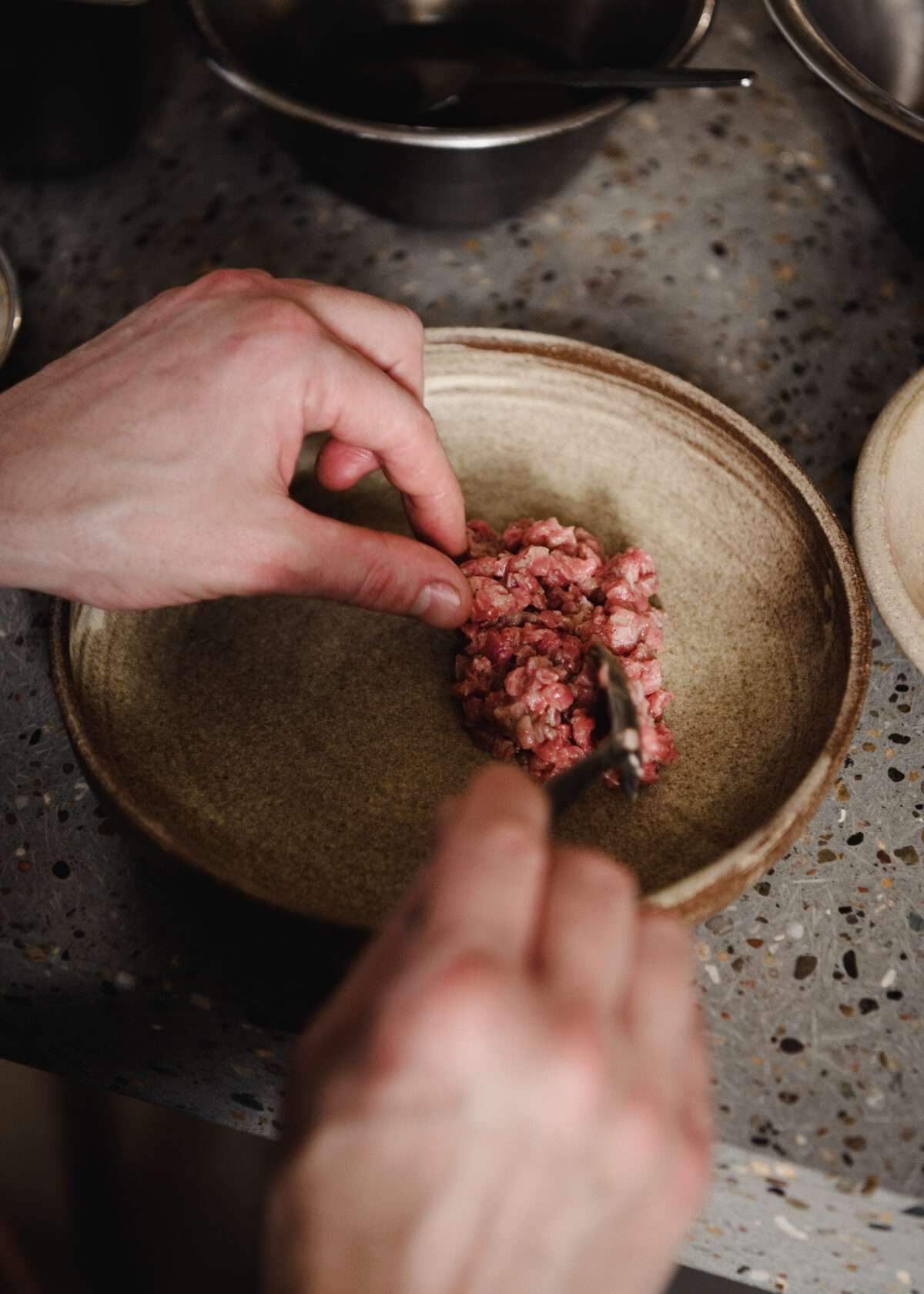
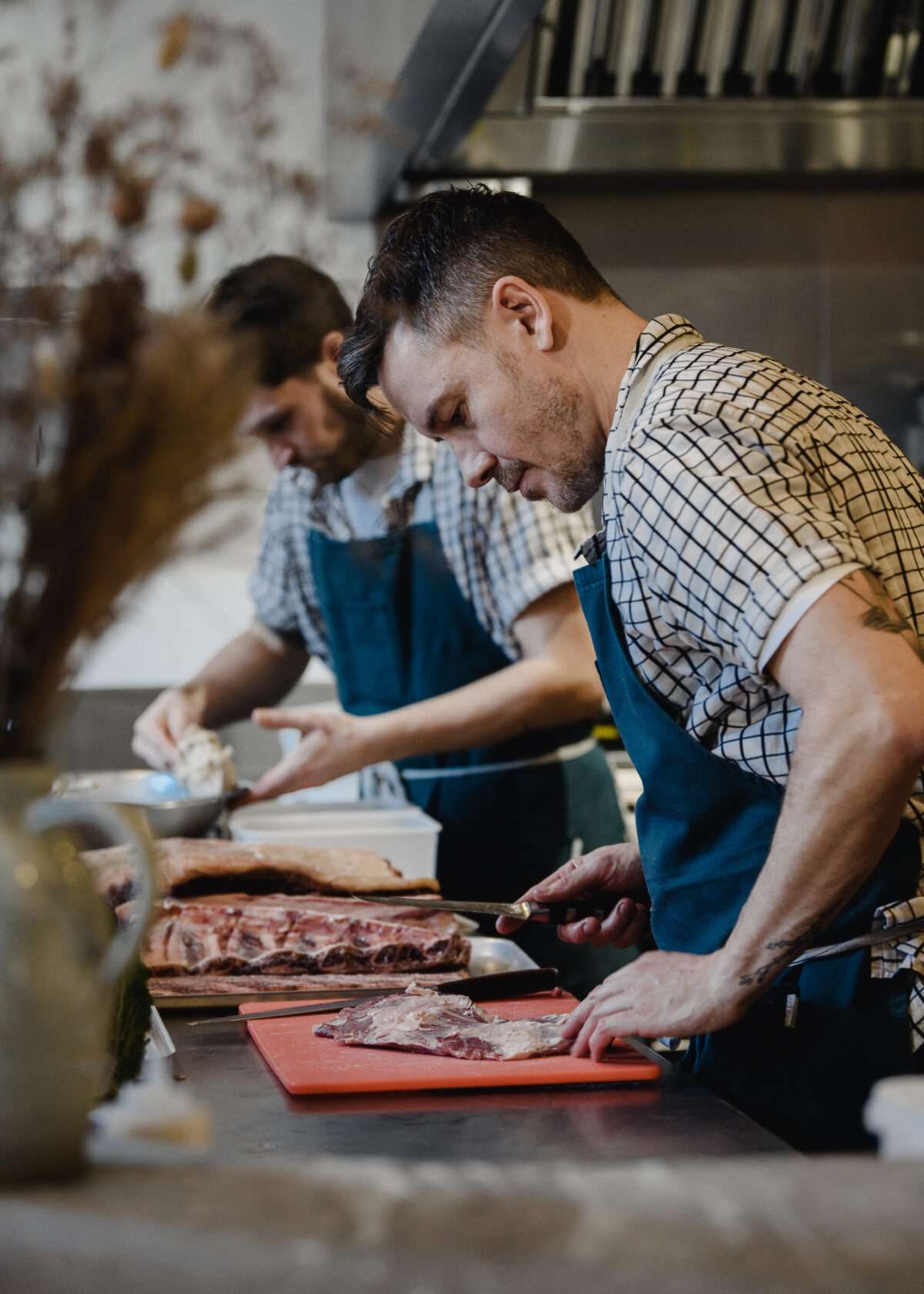
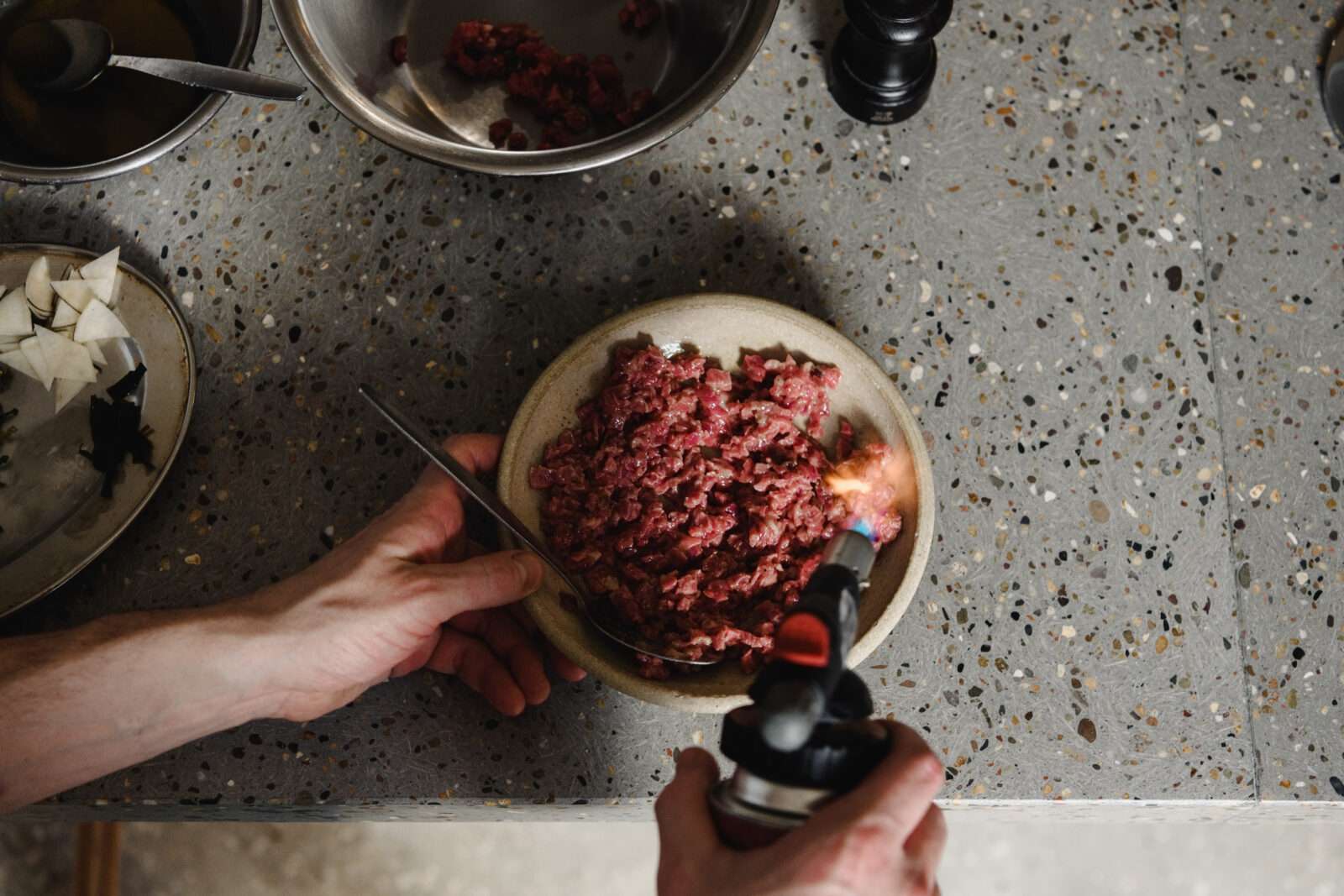
“They way I cook at home, however, is almost the antithesis of what we do at work. That’s not to say I don’t enjoy it – it’s just very functional as I have three young children. My six-month-old daughter is just starting to eat mushy foods in various guises, but, of course, the produce is still vitally important. We tend to only buy organic at home and we are really lucky that we’ve easy access to loads of great products here.
“We get a seasonal veg box from Somerset Local Food and we have a lovely little farm shop called Greensleeves in our village. They have a nursery where you can purchase lots of locally grown vegetables. Next to our village hall is a vending machine for organic milk, which is really cool. It belongs to a company called Holy Cow; we use them as a supplier for the restaurant. They have a second vending machine with bacon from Bagnall Farm, Hurdlebrook organic yogurt, butter from Longman’s Dairy and lovely jam. The only thing they don’t do is bread, which is a shame as they have everything else you need for a Saturday morning bacon sandwich!
“The surrounding area is stunning. My house backs onto the Witcombe valley and there are lots of country walks over open fields from our garden. Our old house was a terrace in south-east London and, before that, we lived in a cul-de-sac in Hackney. It’s been a positive move – we’re definitely not looking back, put it that way!”
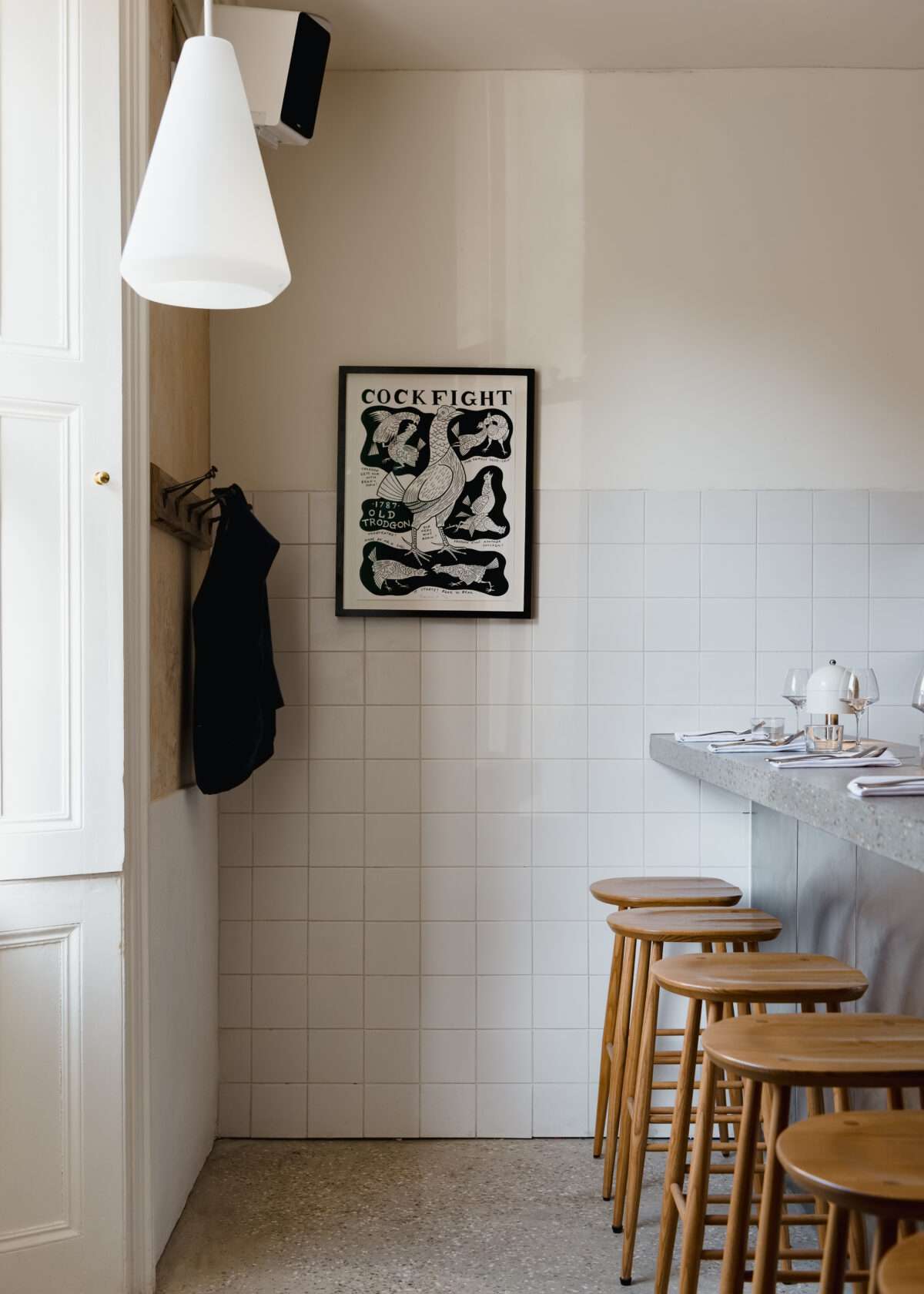
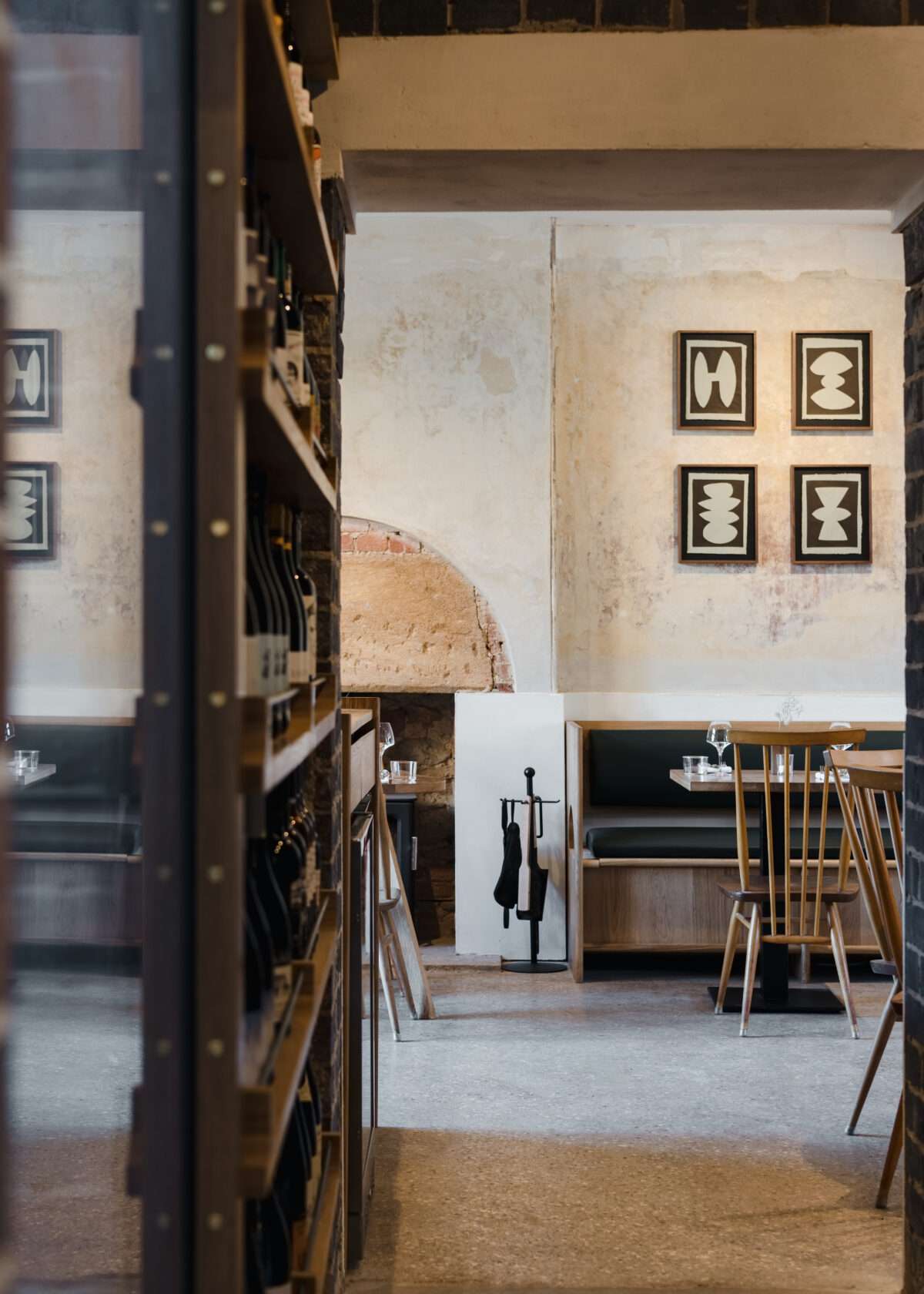
“Holm definitely feels like, and we operate it as, a neighbourhood restaurant. It just so happens that the neighbourhood stretches from Bath and Bristol in the north down Exeter and Bournemouth along the coast! There’s no coincidence that the name sounds like ‘home’: we wanted it to be a welcoming space.”
Matt: “We really wanted the interior to reflect that. The fireplace, for instance, is intended to make the space feel really comforting and cosy, while the lighting gives the space a warm glow – like when you’re looking into someone’s house from outside. Next year, we’re opening seven bedrooms, so people can come and stay too. There will also be a studio available for the community, for things like yoga workshops or fitness classes. But it will also be ancillary space for the team at the restaurant.”
Nicholas: “Part of the plan for Holm is to have a kitchen garden outside. We already have access to the space – a plot that is about a quarter of an acre – and other businesses will share this space to grow their produce too. But let’s get the bedrooms open first! Then we will get started on growing our own produce at the start of next year.”
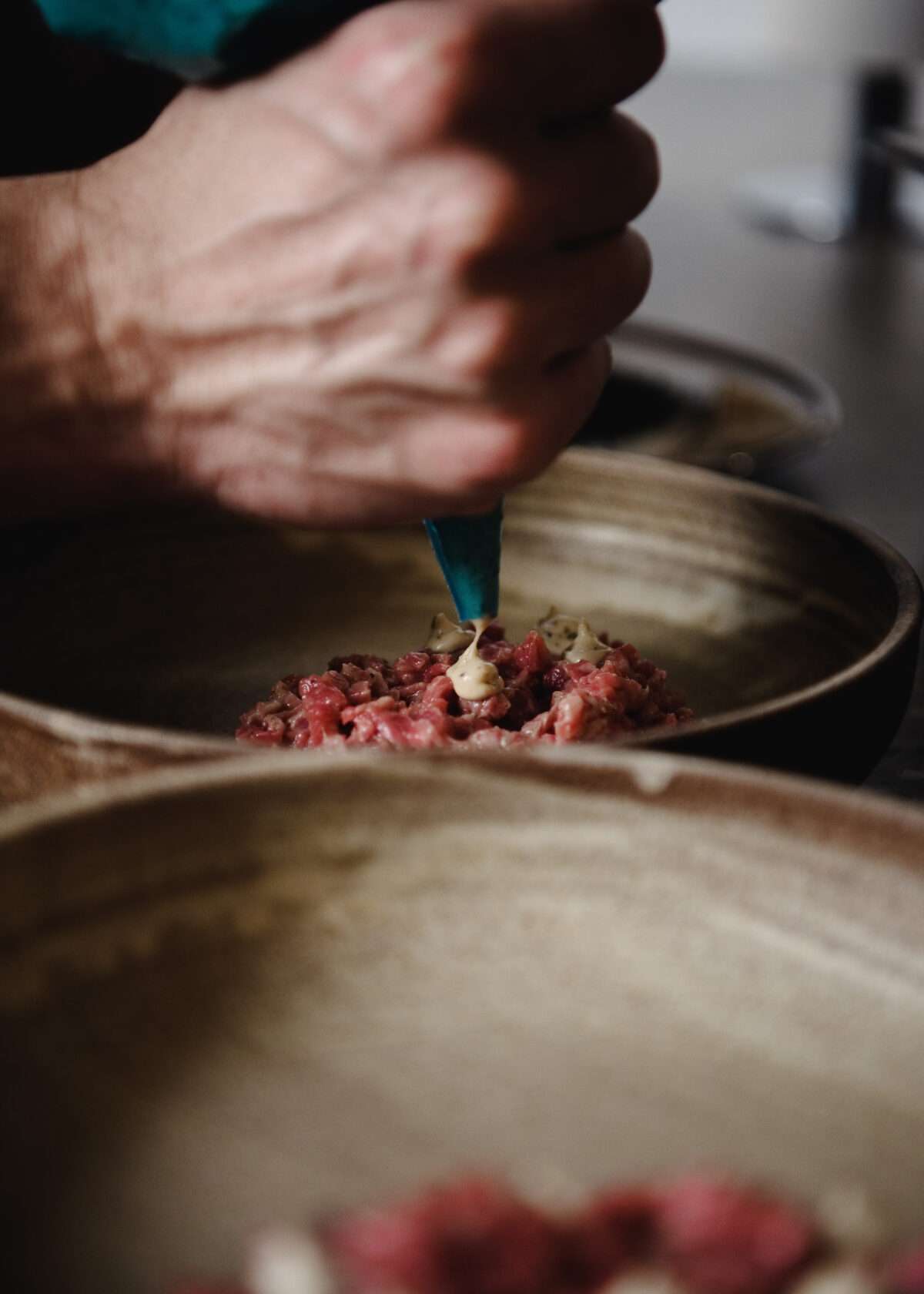
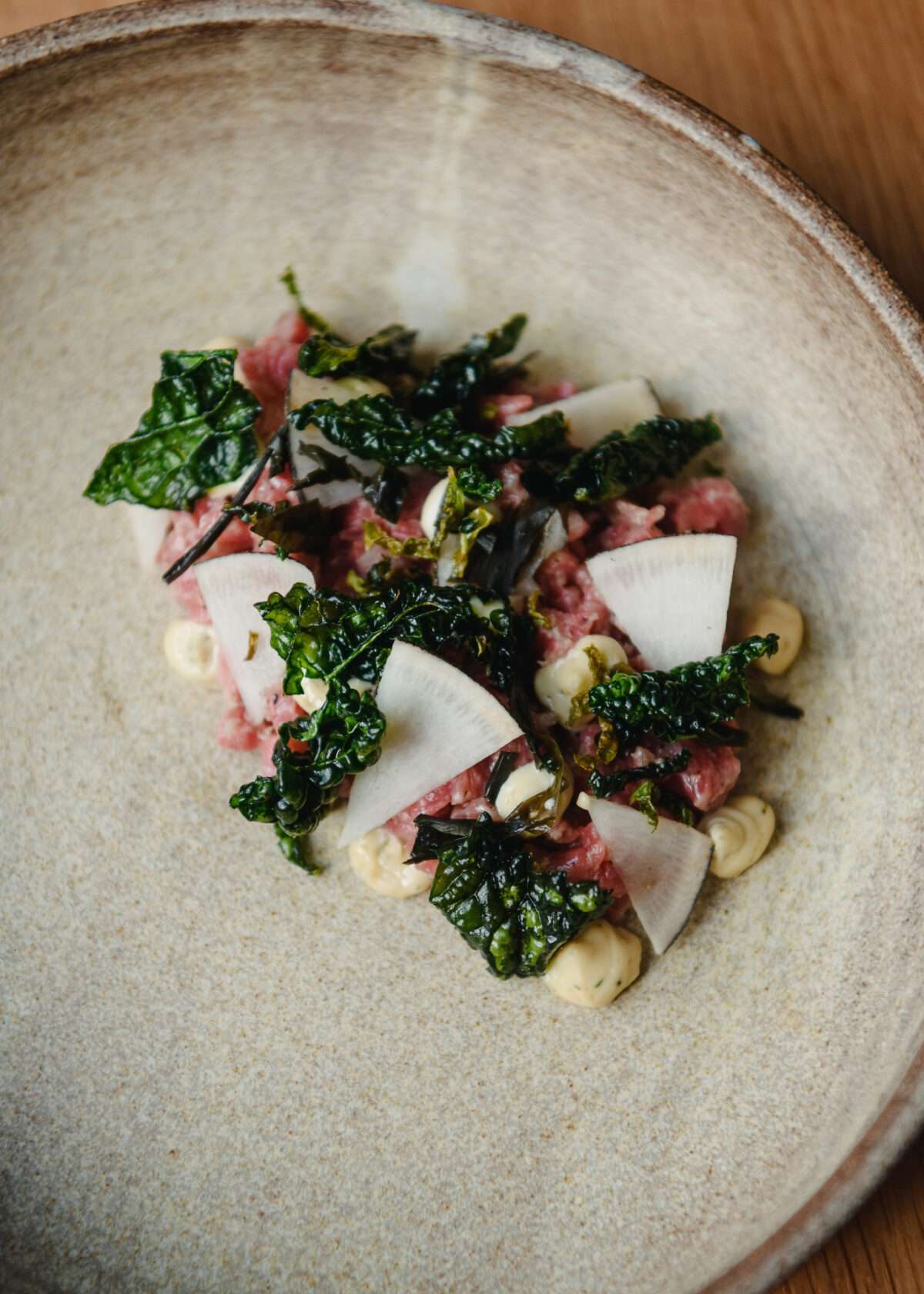
Nicholas’ recipe for beef tartare with anchovy mayonnaise and seaweed vinegar
“This is a very easy dish to prepare but the complex flavours and a few small tweaks give it a point of difference.”
Serves 4
For the seaweed vinegar
10g dried wakame seaweed sheets
200ml white wine vinegar
For the beef tartare
500g heritage-breed beef rump cap, fat cap left on
500ml rapeseed oil
A few shredded leaves of savoy cabbage
A few leaves of cavolo nero, stalks removed and torn into small pieces
Sea salt
Fresh black pepper
For the anchovy mayonnaise
50g tinned anchovies
1 clove garlic, crushed to a fine paste
A few sprigs of thyme, leaves chopped as finely as possible
1 tbsp Dijon mustard
2 egg yolks
200ml rapeseed oil
100ml olive oil
Sea salt, to taste
First, make the seaweed vinegar. In a saucepan, heat the white wine vinegar to boiling point and then pour it over the dried wakame in a heat-proof container. Set aside to infuse for at least 20 minutes. Once infused, remove the seaweed and chop it into 1cm sq pieces. Reserve the vinegar.
Next, make the anchovy mayonnaise. The recipe will yield more than you need but it lasts for three days in the fridge (it makes an excellent condiment for poached eggs, cold cuts, steamed greens and so on). Blend the anchovies, garlic, thyme, mustard and wakame vinegar in a small food processor. Once a smooth paste has formed, add the egg yolks and slowly trickle in the oil. Check the seasoning, adding a little salt and more vinegar as necessary. If it looks too runny, add a little more oil. If it’s too thick, add a splash of water. If available transfer to a piping bag if available; if not set aside.
Next, crisp the cabbage. Heat the rapeseed oil in a deep frying pan until hot. Fry the cabbage in batches until crisp (this usually takes 1-2 minutes), then transfer to kitchen paper before seasoning with salt. Alternatively, drizzle with a little oil and salt and crisp it up in a hot oven.
Now, to make a beef-fat vinaigrette, preheat the oven to 180 degrees Celsius. Trim off the layer of fat from the beef and dice it into small pieces. Transfer to a baking tray and roast in the oven so the fat renders and browns a little (this should take about 20-25 minutes). Strain off the liquid and mix 300ml of fat with 150ml of seaweed vinegar and a little sea salt. Set aside somewhere warm until required.
Finally, to assemble; at least one hour before you want to eat the tartare, remove the beef from the fridge to come up to room temperature. Dice the meat into tiny cubes. Try to avoid any sinew, although a little fat is OK. Dress the meat in the warm vinaigrette, add salt and pepper and adjust the seasoning to taste. Divide between four serving plates and dot the anchovy mayonnaise over the surface. Over each plate, add five pieces of the wakame seaweed, then a sprinkling of the crisp cabbage. Serve immediately.
